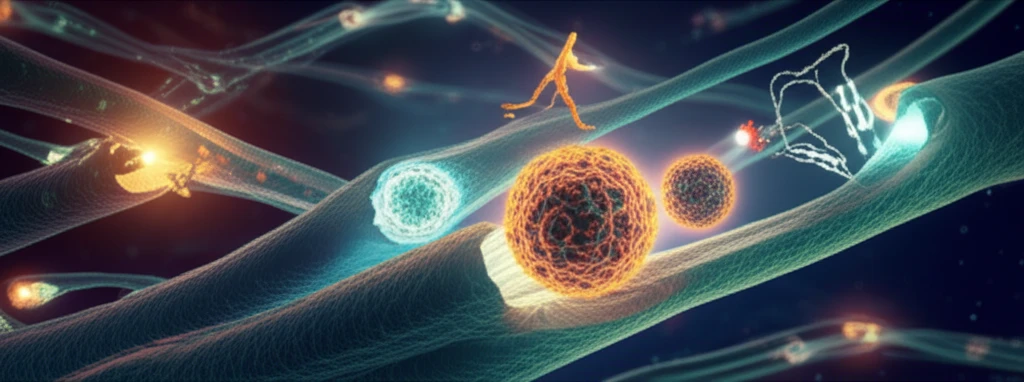
Cellular Choreography: How Autophagosomes Dance to the Microtubule Tune
"Unlocking the secrets of cellular self-eating: New research sheds light on how microtubules and CAMSAP2-EB1 collaborate to transport autophagosomes, paving the way for innovative therapeutic strategies."
Imagine your cells as bustling cities, constantly producing waste that needs to be efficiently removed. This crucial task falls to a process called autophagy, often described as "cellular self-eating." During autophagy, cells engulf damaged components or invading pathogens within double-membrane vesicles called autophagosomes. These autophagosomes then need to be transported to lysosomes, the cell's recycling centers, for degradation.
The efficient transport of autophagosomes is vital for maintaining cellular health and preventing the buildup of toxic debris. Think of it as the city's garbage trucks needing to navigate the streets effectively to reach the recycling plant. However, the exact mechanisms that govern this transport process have remained somewhat mysterious – until now.
Recent research has illuminated a critical aspect of autophagosome transport, revealing the intricate interplay between microtubules – the cell's internal scaffolding – and a protein complex known as CAMSAP2-EB1. This discovery provides valuable insights into how cells maintain order and cleanliness, and it opens exciting avenues for developing new therapies targeting diseases linked to autophagy dysfunction.
Microtubules: The Cellular Highways

Microtubules are dynamic, tube-like structures that form a major part of the cell's cytoskeleton. They act as tracks along which various cellular cargo, including autophagosomes, are transported. Motor proteins, like kinesins and dyneins, act as the "engines" that move cargo along these microtubule tracks. These motor proteins bind to both the microtubule and the cargo vesicle, facilitating movement. But what ensures that autophagosomes are directed to the correct location and transported efficiently?
- CAMSAP2: This protein anchors microtubules at specific locations within the cell, defining their minus ends. Think of it as setting up the starting points for the microtubule tracks.
- EB1: This protein binds to the growing plus ends of microtubules, promoting their polymerization and stability. It acts as a beacon, guiding the microtubule's growth and directing it towards specific cellular destinations.
Implications for Health and Disease
The discovery that CAMSAP2-EB1 plays a key role in autophagosome transport has significant implications for understanding and treating a range of diseases. Autophagy dysfunction has been implicated in neurodegenerative disorders such as Alzheimer's and Parkinson's disease, where the accumulation of misfolded proteins can overwhelm the cell's ability to clear them. By understanding how CAMSAP2-EB1 regulates autophagosome transport, researchers can potentially develop therapies that enhance autophagy and promote the clearance of these toxic proteins. Furthermore, autophagy also plays a role in cancer, where it can either suppress or promote tumor growth depending on the context. A more complete understanding of autophagy's regulatory mechanisms could lead to more targeted cancer therapies. Further, it is worth exploring whether existing drugs used for neurological conditions might have unexpected benefits on the autophagy pathway, opening the door to drug repurposing strategies.
